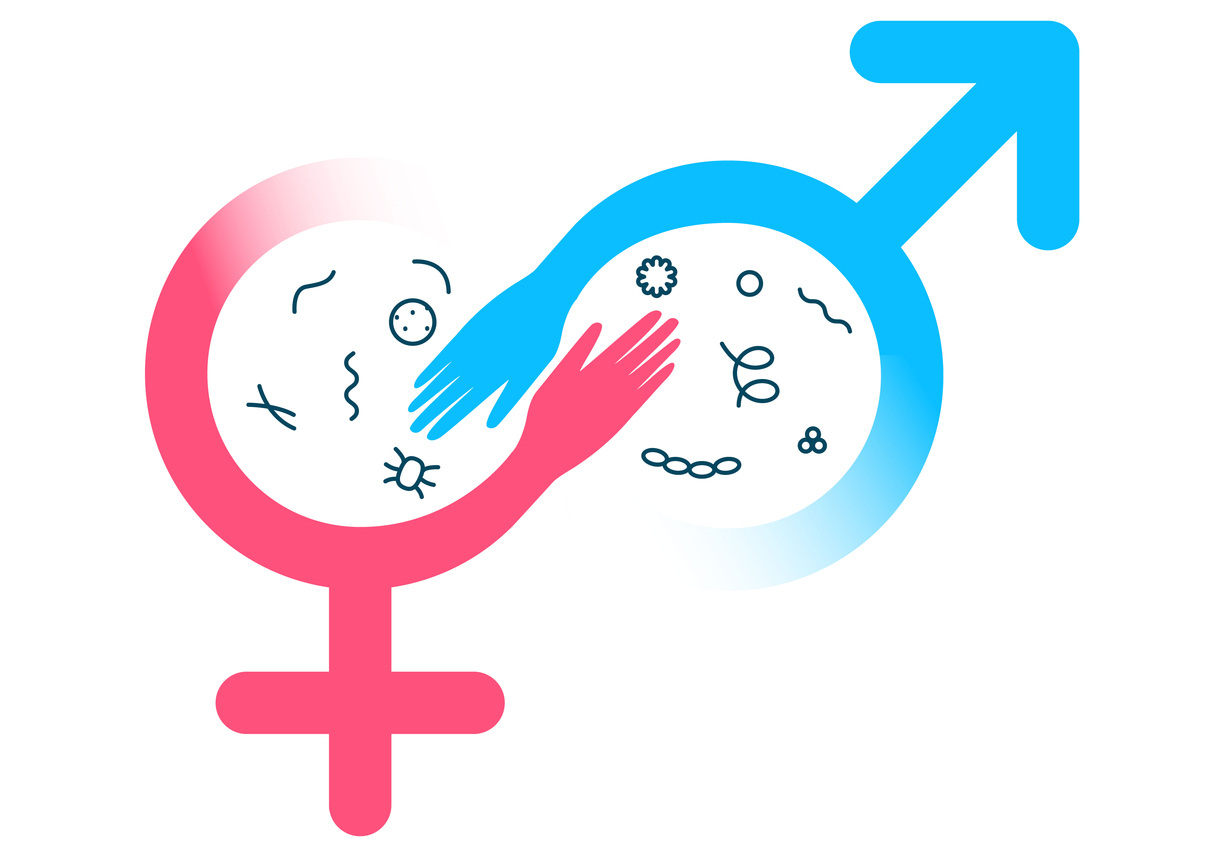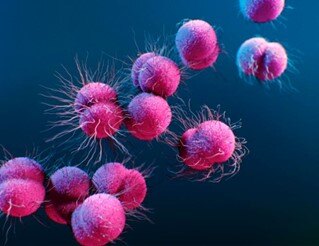 Both men and women fall, victim to infertility, illness, long term disability and even death due to Sexually Transmitted Diseases (STDs). Each day, over 1 million curable sexually transmitted infections (STIs) are contracted globally by individuals aged 15–49, with most cases showing no symptoms. The term STDs is coined for number of infections typically transmitted through sexual contact and are caused by bacteria, viruses, or parasites resulting in rays of clinical manifestations. They can hide in plain sights, showing no symptoms while stealthily invading our lives causing damage for several years. Some of the most notorious disguised agents are Chlamydia, Gonorrhoea, Hepatitis, HIV, Papillomavirus, Herpes, and Syphilis.
Both men and women fall, victim to infertility, illness, long term disability and even death due to Sexually Transmitted Diseases (STDs). Each day, over 1 million curable sexually transmitted infections (STIs) are contracted globally by individuals aged 15–49, with most cases showing no symptoms. The term STDs is coined for number of infections typically transmitted through sexual contact and are caused by bacteria, viruses, or parasites resulting in rays of clinical manifestations. They can hide in plain sights, showing no symptoms while stealthily invading our lives causing damage for several years. Some of the most notorious disguised agents are Chlamydia, Gonorrhoea, Hepatitis, HIV, Papillomavirus, Herpes, and Syphilis.
STDs can be transmitted through vaginal, anal, and oral sex, involving the exchange of blood, semen, vaginal, and other bodily fluids. However, many STDs can also be transmitted vertically (from mother to child during pregnancy or childbirth), through blood transfusions or by sharing needles [1].
The secretive nature of many STDs is what makes the disease family one of the major concerns regarding its control. Furthermore, without accurate diagnosis and treatment, STDs can cause severe long-term consequences beyond the initial infections such as [2]:
Infertility: Damage to reproductive organs in both men and women can lead to infertility.
Complications in Pregnancy and Childbirth: Increased risk of ectopic pregnancy (pregnancy outside the womb), premature birth, low birth weight, and stillbirth, neonatal infections, congenital disabilities, or neonatal death.
Increased Risk of HIV: STDs, particularly those causing ulcers or inflammation, can increase susceptibility to HIV infection.
Cancer: Certain strains of human papillomavirus (HPV) can lead to cervical, anal, and other cancers.
Organ Damage:
-Untreated hepatitis B and C can lead to liver damage, cirrhosis, and liver cancer.
-Long-term consequences of untreated HIV include progression to AIDS, which severely compromises the immune system [3].
The Diagnostic World
Timely diagnosis and treatment are crucial in preventing these severe outcomes. Regular screening, safe sexual practices and vaccination (where available) can significantly reduce the risk of complications associated with STDs.
Diagnostic assays for STDs vary depending on the specific infection. Some common diagnostic methods used for detecting STDs include Nucleic acid amplification tests, Culture, Antigens detection, Antibodies detection, Blood tests, Direct microscopy and Immunofluorescence assay [4]. Rapid diagnostic assays have become the most accepted, limiting the traditional use of culture methods. This shift has spurred the development of quick tests utilizing microscopy, rapid serologic methods for antibody detection, and specific detection of cellular components like antigens, enzymes, or nucleic acid sequences, particularly through amplification techniques [5].
Antigen detection tests use capture antibodies to bind microorganism-specific antigens. These antibodies can be monoclonal, offering excellent specificity, or polyclonal, which are simple and less expensive to produce but exhibit high batch-to-batch variation. For many major STIs, such as syphilis and HIV, detecting the host’s antibody response is a preferred diagnostic method. Serological tests are valuable not only for diagnosis but also for surveillance. However, all serological tests occasionally produce false positives. This issue can often be mitigated by confirming positive results from an initial screening test with a second, unrelated serologic test targeting a different antigen [6].
The Native Antigen Company offers an extensive selection of high-quality antigens for sexually transmitted diseases (STDs). Our comprehensive range of antibodies, known for their high specificity to various STD antigens, provides customers with a versatile array of reagents suitable for immunoassay development and other specific needs.
We are pleased to offer Chlamydia antigens, available in scalable quantities from 10ml to several liters. Our product line includes a full panel of antibodies targeting Chlamydia proteins, including those specific for the MOMP of C. trachomatis, as well as high-affinity antibodies specific for Chlamydia LPS, which bind to C. trachomatis, C. pneumoniae, and C. psittaci. Learn more about our Chlamydia products.
The Native Antigen Company (TNAC) also offers untagged HIV-1 glycoprotein gp140 from group M subtypes A, B, C, CRF01-AE, group O, and HIV-2 glycoprotein gp140. These advanced antigens facilitate the development of a new generation of diagnostic assays and support structural studies. Discover the advantages of our novel HIV antigens portfolio in our blog: New Tools for HIV Diagnosis.
For a complete list of our HIV and HTLV products, please visit:
Explore our product offerings:
Neisseria gonorrhoeae
 Gonorrhoea, caused by the bacterium Neisseria gonorrhoeae, is a preventable and treatable sexually transmitted infection mainly spread through vaginal, oral, or anal sex. It is the second most common bacterial STI, leading to significant health issues and considerable economic costs worldwide. Annually, there are 87 million new cases globally, making it a major public health concern. Over the past 20 years, global infection rates of N. gonorrhoeae have risen markedly. In the United States, infection rates increased by 111% from 2009 to 2020; in Europe, rates rose by 218% from 2009 to 2018; and in Australia, there was a 127% increase from 2012 to 2019 [7].
Gonorrhoea, caused by the bacterium Neisseria gonorrhoeae, is a preventable and treatable sexually transmitted infection mainly spread through vaginal, oral, or anal sex. It is the second most common bacterial STI, leading to significant health issues and considerable economic costs worldwide. Annually, there are 87 million new cases globally, making it a major public health concern. Over the past 20 years, global infection rates of N. gonorrhoeae have risen markedly. In the United States, infection rates increased by 111% from 2009 to 2020; in Europe, rates rose by 218% from 2009 to 2018; and in Australia, there was a 127% increase from 2012 to 2019 [7].
The bacterium is highly adapted to humans, and its success as a pathogen stem from its ability to evade the host’s innate defenses and suppress adaptive immune responses – leading to various diseases, including symptomatic urogenital infections and asymptomatic mucosal infections. The bacterium’s numerous virulence factors and antigenic variation enable it to colonize mucosal surfaces and cause infections through efficient transmission, adherence, proliferation, local inflammation, and possible dissemination [8].
Beating Gonorrhoea: How Diagnostics Are Combating Antimicrobial Resistance
N. gonorrhoeae increases the risk of HIV transmission and complicates treatment due to its frequent resistance to multiple antibiotics. The first case of extensively drug-resistant (XDR) N. gonorrhoeae, resistant to ceftriaxone and azithromycin – the current first-line antimicrobials, was reported in the UK in 2016. XDR N. gonorrhoeae with high-level resistance to these antibiotics has now been identified in both the UK and Australia. In some respects, the pipeline for gonorrhoea treatment appears promising, with numerous repurposed and new agents currently undergoing trials. Recently, several novel gonococcal antimicrobial therapies, including solithromycin, zoliflodacin, and gepotidacin, have been tested in phase 2 and 3 trials. The first agent failed to achieve acceptable cure rates in clinical trials, while phase 3 study results for the latter two agents are still pending [5]. Historical evidence, however, indicates that the benefits of any new agent are likely to be short-lived. Clinicians and policymakers should therefore expect resistance to these new agents to emerge relatively quickly.
In the pipeline: Neisseria Gonorrhoeae Outer Membrane Vesicle Vaccines
Pathogenic and commensal Neisseria species produce key outer membrane proteins (OMPs) found in outer membrane vesicles (OMVs) which are crucial for various functions, particularly in the pathogenic species N. meningitidis and N. gonorrhoeae. Meningococcal OMPs are categorized into five classes: Classes 1-3 are porins, Class 4 (RmpM) stabilizes receptor complexes, and Class 5 (Opa) aids in adhesion and invasion. OMV vaccines are an attractive approach because they include many gonococcal surface antigens in their natural conformation [9].
Recent data suggest that gonorrhoea vaccines are biologically feasible. Vaccines targeting outer membrane vesicles (OMV) of serogroup B N. meningitidis may reduce gonorrhoea incidence due to the close genetic relationship between N. meningitidis and N. gonorrhoeae. This cross-protection has sparked renewed interest in developing a gonorrhoea vaccine. The unexpected link between these pathogens has reinvigorated research and increased international focus on gonorrhoea vaccine development.
Several N. gonorrhoeae-specific outer membrane vesicle (OMV) vaccines are now undergoing preclinical or clinical evaluation. Notably, these include [7]:
NGoXIM : A native OMV vaccine candidate in late preclinical stages.
dmGC_0817560: Another native OMV vaccine candidate in late preclinical development.
GMMA (Generalized Modules for Membrane Antigens) vaccine: This vaccine is currently recruiting participants for a Phase 1/2 clinical trial.
These vaccines are the next generation of anti-gonococcal OMV vaccines, specifically engineered to leverage advances in the understanding of N. gonorrhoeae pathogenesis and host immune response. They also build on the progress made over the past decade in exploring the link between serogroup B meningococcal OMV vaccines and reduced N. gonorrhoeae infection.
The Native Antigen Company now offers Neisseria Gonorrhoeae Antigen produced from homogenised bacterial lysate and recombinant Neisseria Gonorrheae RmpM outer membrane protein, expressed in E. coli developed with high purity.
Head over to the link: Neisseria gonorrhoeae antigen – The Native Antigen Company for more information on the individual products available.
Can’t find what you are looking for?
The Native Antigen Company has experience working with world leaders in infectious diseases to fulfill their custom research and development needs. We are known for our agility and rapid turnaround time; from concept to full-scale production within 8 weeks*.
Click here to learn more about our custom services: TNAC Custom Capabilities Brochure.
*Based on average turnaround times. More complex custom services may take longer.
References:
1: World Health Organization: WHO (2024) Sexually transmitted infections (STIs). https://www.who.int/news-room/fact-sheets/detail/sexually-transmitted-infections-(stis).
2: Eng, T.R. and Butler, W.T. (1997) HEALTH CONSEQUENCES OF STDS. https://www.ncbi.nlm.nih.gov/books/NBK233443/.
3: Zhou, Y. et al. (2017) ‘How Hepatitis B virus causes cirrhosis and liver cancer,’ Medical Hypotheses, 108, pp. 52–53. https://doi.org/10.1016/j.mehy.2017.08.005.
4: Le, A., MD (2023) Understanding STD tests: results, accuracy, costs, and where to go | Buoy. https://www.buoyhealth.com/blog/lab-test/understanding-std-tests.
5: Storch, G.A. (2000) ‘Diagnostic virology,’ Clinical Infectious Diseases/Clinical Infectious Diseases (Online. University of Chicago. Press), 31(3), pp. 739–751. https://doi.org/10.1086/314015.
6: Programmes, G.H.H. and Sti. (2023) Laboratory and point-of-care diagnostic testing for sexually transmitted infections, including HIV. https://www.who.int/publications/i/item/9789240077089.
7: Williams, E. et al. (2024) ‘Neisseria gonorrhoeae vaccines: a contemporary overview,’ Clinical Microbiology Reviews, 37(1). https://doi.org/10.1128/cmr.00094-23.
8: Raccagni, A.R. et al. (2023) ‘Neisseria gonorrhoeae Antimicrobial Resistance: The Future of Antibiotic Therapy,’ Journal of Clinical Medicine, 12(24), p. 7767. https://doi.org/10.3390/jcm12247767.
9: Troncoso, G. et al. (2001) ‘Analysis of the expression of the putatively virulence-associated neisserial protein RmpM (class 4) in commensal Neisseria and Moraxella catarrhalis strains,’ FEMS Microbiology Letters, 199(2), pp. 171–176. https://doi.org/10.1111/j.1574-6968.2001.tb10669.x.
10: Neisseria gonorrhoeae (no date b). https://www.who.int/teams/immunization-vaccines-and-biologicals/diseases/neisseria-gonorrhoeae#:~:text=Recent%20data%20suggest%20vaccines%20for,vaccines%2C%20may%20reduce%20gonorrhoea%20incidence.

